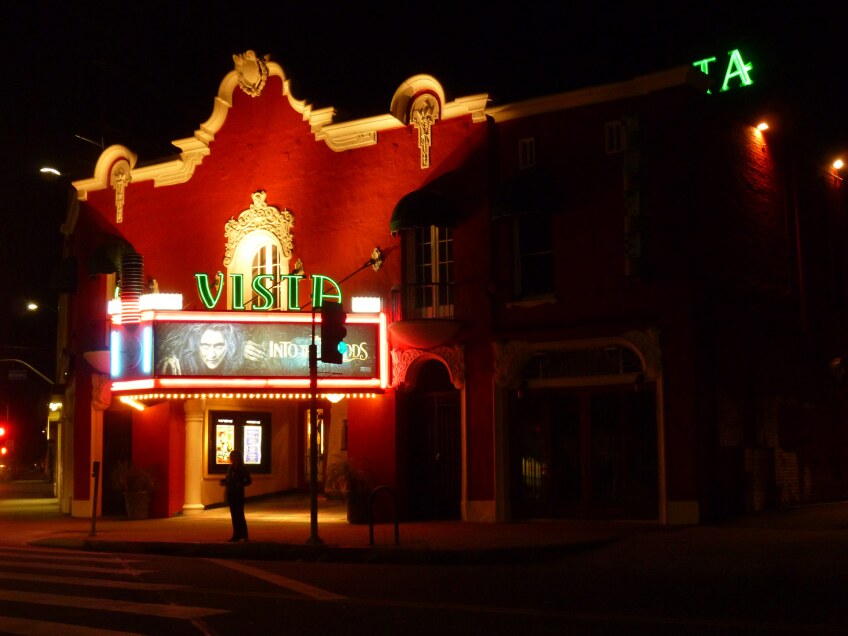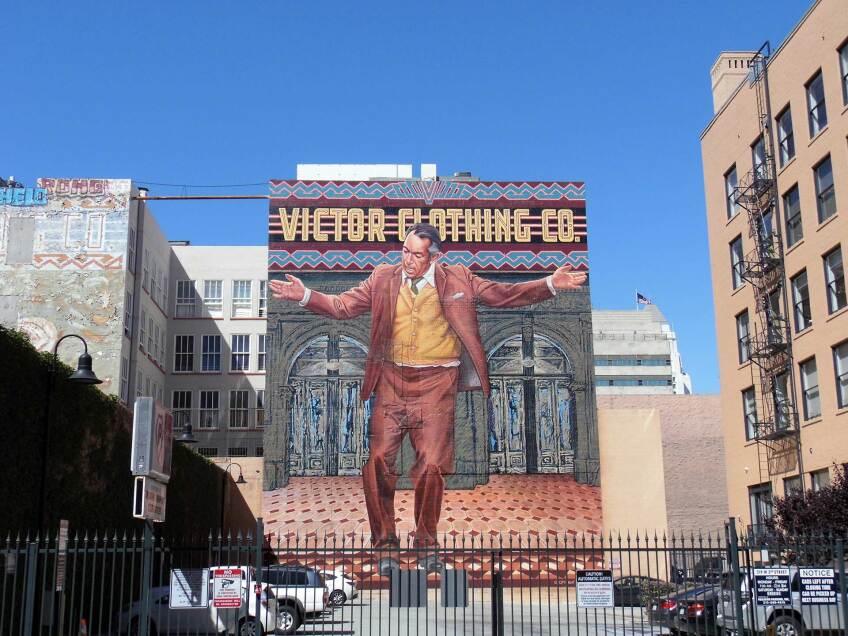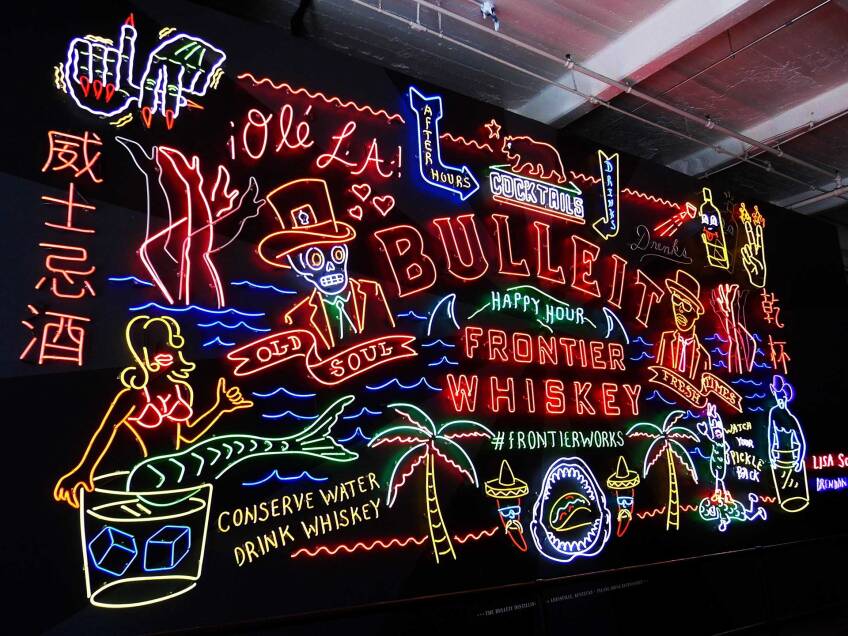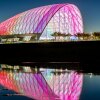61 Self-Guided Tours for Exploring L.A. on Your Own

While we stay safe at home we all need to remember to get up off the couch and move around a little — even if that means just venturing out and discovering something new within our own neighborhoods.
Fortunately, Los Angeles and its surrounding cities are chock full of secrets to uncover and histories that unfold before your very eyes — if you know where to look.
Oh, and if you can figure out what you’re actually looking at.
Fortunately, there are resources available right now that can provide that kind of guidance for you for FREE — no books to purchase, clubs to join or apps to download!
So whether you’re ready to safely embark on a local adventure on foot, by pedal or behind the wheel, here are 61 gratis self-guided tours you can take on your own terms.
1. Los Angeles Explorers Club, Downtown L.A.



Billed as providing “bicycle journeys into L.A.’s forgotten times,” the L.A. Explorers Club — not to be confused with the Adventurers Club — attempts to uncover the layers upon layers of history that have contributed to the Los Angeles we know and love today. In the pre-COVID pandemic days, you could grab a bike and join their merry band of urban adventurers for a curated ride themed around a historical event or other anchor to the diminishing past in L.A.’s streets.
In June, club founders Aimee Gilchrist and Brantlea Newbury were inspired by this era of social distancing and pivoted their explorations to be self-guided — though still designed to be taken by bike. The collection is growing — but start off with the guide to 19th-century Mexican L.A. created with Picturing Mexican America, called “Daily Life in Early L.A.”
This 14-mile round-trip two-wheeler trek is appropriate for all skill levels and comes with a downloadable route and audio guide — and can even be downloaded with GPS-enabled turn-by-turn directions. It starts and ends at Union Station — transporting you through downtown L.A.’s present-day Civic Center and Chinatown as well as farther south at Exposition Park. At each of the nine stops, the guide reveals the secret histories and forgotten stories of the early Los Angeles that once was — a Los Angeles that many Southern Californians don’t know existed.
2. Los Angeles Conservancy, Various Locations






A preservation-minded and architecture-oriented nonprofit, the Los Angeles Conservancy is renowned for conducting regular walking tours of historic neighborhoods and landmarks that are led by well-trained volunteer docents (who are often historians themselves). While those are currently suspended — even the special tours usually held during summertime — the Conservancy has begun to offer virtual and self-guided tours.
Historic neighborhoods that can now can be explored with a tour booklet in hand include Chinatown, Koreatown, Pico-Union and downtown L.A., with additional tours themed around feature films shot in the city (“City Lights,”,“Safety Last!”), specific artists and architects (like Millard Sheets) and the lesser-known but significant era of the 1970s and ’80s in Venice, California.
The brochures are presented in a kind of choose-your-own-adventure style, many with thorough descriptions and map overviews marked with numbered stops that you can follow in any order you wish. Because they were created for previous L.A. Conservancy events, some of which occurred years ago, some information might be outdated as historic buildings get renovated, adaptively reused or even lost. But they will arm you with a lot more information than what you’d have going into any of these walks cold! Several activities were designed to engage the entire family — and Conservancy membership is not required to access any of the self-guided tours.
3. Friends of Residential Treasures: Los Angeles, Various Locations


FORT: LA is an upstart organization created in 2018 to help locals and visitors alike appreciate and celebrate many of the residential homes that define Los Angeles streetscapes. While interior access to those homes is not possible right now, FORT: LA is facilitating the opportunity to venture outside of your own neighborhood by launching its self-guided “trails program” — including FORT Trails, whose routes have been written by experts (or “trailblazers”) in conservation, art and architecture, academics and more.
To read and download or print any of the three currently featured trail guides, you must provide your email address to sign up — and in return, you’ll receive thorough documentation as to the what, who, where and why of architecturally significant homes by such renowned architects as Richard and Dion Neutra, Stiles O. Clements, Rudolph Schindler, Frank Lloyd Wright and even an array of postwar Japanese-American architects. Some original blueprints are even included along with information about ownership history and other details that aren’t always easy to get your hands on.
These self-guided tours can’t be completed on foot or by bike — as they embrace the sprawl of Los Angeles by pinpointing locations as far afield as Los Feliz to start and Malibu for the finish, a good 35 to 40 miles apart. So, you can either spend the entire day in your car following the route or simply chop it up into bite-sized pieces, tackling each locale region by region.
4. Museum of Neon Art, Various Locations

One of the highlights of those warm summer nights in Los Angeles is boarding the top deck of an open-air double decker bus to cruise past the city’s broad and diverse neon sign offerings, from theater marquees to apartment complex rooftop signs and even the oldest restaurant in Hollywood. But while the Museum of Neon Art’s Glendale location is temporarily closed and its Neon Cruises have ceased until it’s safe to resume them, you can still explore our neon wonderland — on foot or by bike or car — with MONA as your guide.
The newly debuted MONA Light Walks help you bask in lights that have lit the night through some of our darkest times in the City of Angels — with the same deep knowledge and wit as you’d get from having your own museum docent lead the way. Currently available guides include Glendale, East Hollywood and Koreatown in all their glowing brilliance. Expect to see neon that adorns the likes of a 1920s corset shop, a 1930s bar, a 1940s burger stand, a 1960s bowling alley, a 1980s oddities store and gallery and so much more.
And, until we can gather together again, MONA’s online shop is open for business — selling neon-themed face coverings among its wares, as well as gift certificates for future Neon Cruises.
5. Angels Walk Los Angeles, Various Locations




Angels Walk L.A. is a nonprofit venture that coordinates with the City of Los Angeles and Metro to bring you face to face with some of the most historically and culturally rich places in Los Angeles — designed around Metro rail and bus lines.
Its self-guided historic walking trails of have been a fixture in the city since their inception in 1996 — now totaling 12 neighborhood routes, many of which are complemented by stanchions mounted on sidewalks at various points of interest (with more on the way).
For each walk, you can go online and download PDF guidebooks and maps, access custom digital maps, view photo previews of walk highlights, and even check out a sample stanchion design. You’ll be fully prepared to embark on your journey, with the added bonus of distances and average completion times listed and pointers on how to get there by public transportation.
The newest created walk is actually a 2-for-1 covering both East Hollywood and Silverlake — but legacy walks also take you to South L.A., Northeast L.A., Bunker Hill and elsewhere in downtown L.A. You’ll explore ethnic enclaves, artist colonies, cultural crossroads, moviemaking sites, LGBTQ history, commercial cores, and even some grandeur of a golden era. You could easily devote a couple of hours exploring significant people, architecture, and cultural movements on each of these walks — maybe even more, if you follow the recommended “Side Strolls” and/or “Farther Afield” sites.
6. Pasadena Visitors Center, Pasadena


The City of Pasadena gets lots of tourists throughout the year — especially around New Year’s Day and the hubbub surrounding the Tournament of Roses bowl game and parade. While those large-scale events will be taking a break at the end of 2020 and beginning of 2021— and visitors won’t necessarily be traveling from outside the L.A. metro area — it presents the perfect opportunity to be a tourist in your own town and explore your own backyard.
The Pasadena Convention & Visitor Bureau has published a brochure that features no less than 10 individual Pasadena neighborhoods to tour on your own — each spotlighting landmark homes and buildings over the course of as little as 1.2 miles and as much as 4 miles. Explore the landmark district of Bungalow Heaven, whose Craftsman homes were built mostly in the first 20 years of the 20th century. Or head over to the historic Playhouse District, which gets its name from the official state theater of California, the Pasadena Playhouse.
Your options also include Pasadena’s oldest commercial area — a.k.a. “Old Pasadena,” a National Register Historic District — and a Victorian district (including “Millionaires’ Row”), as well as the neighborhood bordering the Arroyo Seco where you can peruse the exteriors of surviving Greene and Greene-designed homes (and not just The Gamble House). In all, there are 16 historic districts covered within the city’s 23 square miles — all of which are accessible to pedestrians, bicyclists and motorists alike, with parking recommendations!
7. Santa Monica Conservancy, Santa Monica


Santa Monica’s historic preservation organization, Santa Monica Conservancy, normally conducts popular docent-led walking tours of the city’s historic downtown on Saturdays at 10 a.m. for a mere $10 ($5 for members). In light of current restrictions, the walking tour brochures are currently available as a free download so you can still discover downtown Santa Monica’s culture, history and architecture. Only now, you can do it at your own pace and with plenty of safe distance.
Highlights of the “A Walk Through History” downtown tour include a lavish oceanside hotel, the restored façade of the area’s first theater, a former WWII-era military rehab center and so much more — including a guide to some of the city’s lost buildings. Explore ghost signs, vintage inscriptions, a historic Victorian dwelling, Art Deco delights and some hidden gems along the dense commercial district of Third Street Promenade.
You also have the opportunity to download an additional five walking tour guides from Santa Monica Conservancy — including those that cover a turn-of-the-century historic district just beyond the Promenade, the city’s southernmost tier (a.k.a. South Beach), part of the Palisades Tract that was annexed to Santa Monica in 1906) and more. All of these brochures are also available via a free transaction that requires an email address but no credit card. If you enjoy these tours, donations are gladly accepted on the website.
8. Beverly Hills Conference & Visitors Bureau, Beverly Hills




During the height of the tourist season — which is pretty much March through December — Beverly Hills can feel a bit overwhelming to visit. But just because the scene has calmed down dramatically over the last few months doesn’t mean Beverly Hills is closed as a destination. In fact, much of what there is to explore in this 5.7-square-mile city to the west is actually outdoors — and safely enjoyed with plenty of distance.
Take a tip from the folks at the visitor center, who’ve prepared walking guides that help reveal the storied past of this celebrity-studded enclave. By putting public art and gardens, architectural gems, iconic historical spots and the city’s diverse heritage in the spotlight, they go way beyond any stereotypical “stargazing”! Prepare to indulge in foodie favorites as you stroll through the Golden Triangle and more, past former celebrity haunts, staunch locals’ favorites and film locations galore. Some dining establishments may be temporarily closed, but you’ll find plenty of others for outdoor seating.
Many of the Beverly Hills municipal parking structures offer two hours free parking without validation — so park your car and get ready to walk your route of choice — be it themed for art and culture, history, movies or family activities. Each tour can easily be modified, depending on what you’re in the mood for and how much time you’ve got.
9. The Glendale Historical Society, Glendale
The Glendale Historical Society was formed in 1979 to save the Victorian-style Doctors House, which the organization saved from the wrecking ball, moved to Brand Park and restored. The house now operates as a museum. But over the course of the last four decades, the historical society has branched out to also host annual home tours, a film series at the Alex Theatre, insider tours of Forest Lawn Glendale and other themed walking tours.
Since March, all of the organization’s public outreach and educational activities have been postponed, canceled or moved to the digital world — but that doesn’t mean the only way to experience Glendale’s history is by sitting in front of the computer. You can learn the story of Glendale's history, growth and civic development — in person — by taking a self-guided tour of the city’s civic center, considered the “Historic Heart of Glendale.”
Some of the 20+ properties on the Glendale Civic Center Walking Tour are already listed on the Glendale Register of Historic Resources and/or the National Register of Historic Places — and many others are certainly worthy of local, state or national historic designation. While some date back even prior to the city’s founding in 1906, others reflect a more modern — or even Moderne — perspective from the mid-20th century. In addition to municipal buildings at the government center of Glendale, you’ll also have the chance to check out the exteriors of two of the city’s oldest houses, rare relics from its days as a subdivision tract of the former Rancho San Rafael.
Top Imge: Fine Arts Building | Sandi Hemmerlein









